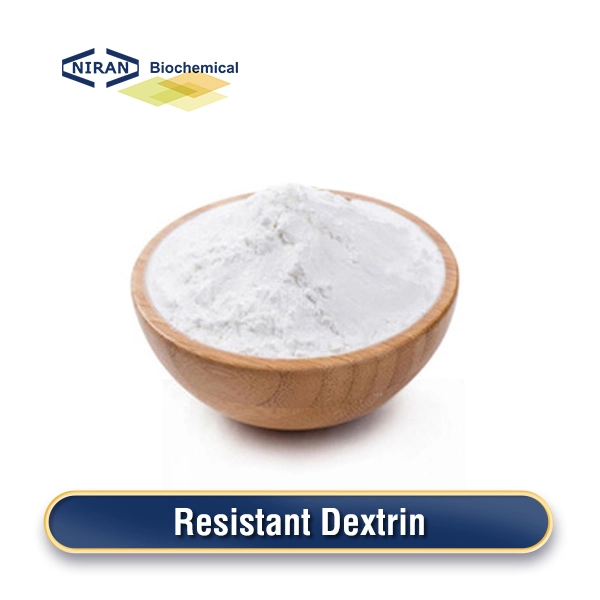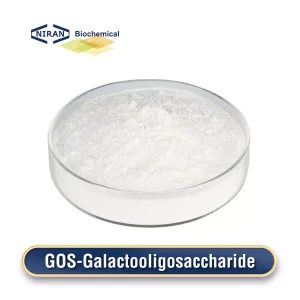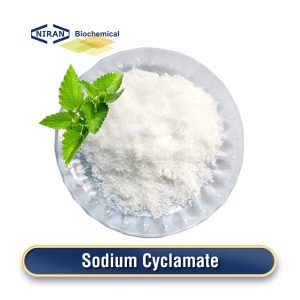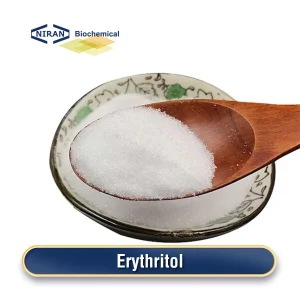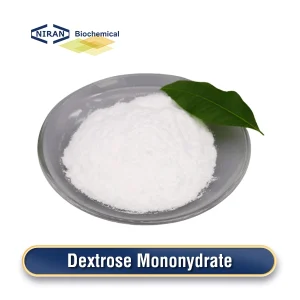Niran Biochemical
YOUR RELIABLE FOOD INGREDIENTS
Send Inquiry
Home » Products » Sweeteners » Resistant Dextrin
Resistant Dextrin
- CAS: 9004-53-9
- Chemical Formula: (C6H10O5)n
- Certification: KOSHER, ISO, HALAL, FSSC22000, BRC, etc.
- Standard: BP/USP/FCC
- MOQ: 1000KG
- Shelf Life: 2 Years
Inquire Product
Product Description
What is Resistant Dextrin?
Resistant dextrin is a low-calorie soluble food raw ingredient with a mildly sweet flavor and no other unpleasant smells. It is a white powder. It has strong solubility in water and excellent stability when forming a colloidal solution. It has numerous chances to expand in the food industry.
Resistant Dextrin can be obtained by acid hydrolysis and enzyme hydrolysis. The acid hydrolysis method is to heat starch under acidic conditions to partially hydrolyze it to produce resistant dextrin, and then neutralize, filter, decolorize, concentrate and dry to obtain the product. The process is simple but acidic waste liquid needs to be treated.
The enzyme hydrolysis method uses specific enzymes to decompose starch under suitable temperature and pH conditions to produce resistant dextrin, and then neutralize, filter, decolorize, concentrate and dry to obtain the product. It has the advantages of gentle operation, high product purity, and low environmental pressure. It has progressively taken over as the standard technique for making resistant dextrin.
Related parameters:
| Items | Standards(powder) | Standards(liquid) |
| fiber content | 99% Min | 90% Min |
| Water Activity | – | 0.865 Max |
| Sugar | 2% Max | 2% Max |
| Solid substance | – | 75%~75.4% |
| pH | 3.5~5.5 | 3.5~5.5 |
| Mercury | – | 5 ppm Max |
| Moisture | 6% Max | – |
| Lead | 0.5 ppm Max | 0.5 ppm Max |
| Arsenic | 0.5 ppm Max | 5 ppm Max |
| Cadmium | – | 1 ppm Max |
| Total Aerobic Count | 1500 CFU/g Max | 1000 CFU/g Max |
| Total coliform | 30 MPN/100g Max | 30 MPN/100g Max |
| Mould and Yeast | 50 CFU/g Max | 25 CFU/g Max |
| E.coli | 3 MPN/g Max | 3 MPN/g Max |
Recommended dosage:
| Food name | Maximum usage(g/kg) |
| Carbonated drinks | 3 g/kg |
| Yogurt | 5 g/kg |
| Milk | 4 g/kg |
| Fruit drinks | 3 g/kg |
| Soy sauce | 3 g/kg |
| Ketchup | 10 g/kg |
| Ham | 10 g/kg |
| Sausage | 10 g/kg |
| Puffed food | 10 g/kg |
| Lactic acid bacteria drinks | 10 g/kg |
| Fermented milk drinks | 10 g/kg |
| Bread | 10 g/kg |
Resistant Dextrin has a wide range of use
1. Food industry: Resistant dextrin is often used as a thickener, stabilizer and anti-icing agent, and is widely used in beverages, cakes, salad dressings, ice cream and other products. It can increase the taste and texture of food while helping food retain moisture.
2. Pharmaceutical industry: In the pharmaceutical field, resistant dextrin is used as a carrier material to control drug sustained release and improve the bioavailability of drugs.
3. Cosmetic industry: Resistant dextrin can be used to prepare skin care products, such as moisturizers, thickeners and emulsifiers, which helps to improve the moisturizing and stability of skin care products.
4. Textile industry: In textile processing, resistant dextrin can be used for dyeing, printing and anti-wrinkle treatment to improve the processing performance and durability of textiles.
5. Petroleum industry: Resistant dextrin is used as an oil well reinforcement agent and reservoir improver in the petroleum industry, which helps to improve the performance of oil wells and increase oil recovery.
6. Paint industry: Adding resistant dextrin to paint can improve the fluidity and adhesion of the paint and increase the durability of the paint.
7. Environmental protection: Resistant dextrin can be used as a water treatment agent to purify wastewater and water bodies, which helps to improve water quality and protect the environment.
User asked question:
Q: Is resistant dextrin a prebiotic?
A: Yes, resistant dextrin is a prebiotic. As dietary fiber, resistant dextrin cannot be broken down by digestive enzymes in the human small intestine, and can reach the large intestine and promote the growth of beneficial bacteria such as bifidobacteria and lactobacilli. Its metabolites, such as short-chain fatty acids, help maintain intestinal health, improve intestinal barrier function, reduce intestinal pH, and inhibit the growth of harmful bacteria.
Furthermore, resistant dextrin can strengthen the immune system, control blood fat and sugar levels, and improve digestive health.
Q: What should be considered when storing or transporting resistant dextrin?
A: Resistant dextrin is easy to absorb moisture and should be stored in a dry and cool environment to avoid contact with moisture and humid air; the storage temperature should be controlled below room temperature and avoid high temperature environment to prevent product agglomeration and quality degradation; direct sunlight should be avoided, and long-term exposure to sunlight may affect product quality; use moisture-proof and anti-oxidation sealed packaging materials to ensure that the packaging is intact and prevent air and impurities from entering.

